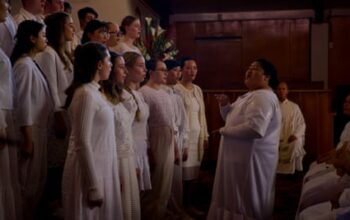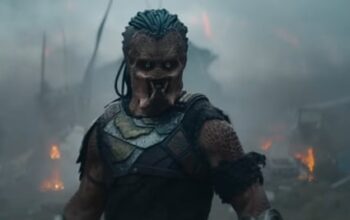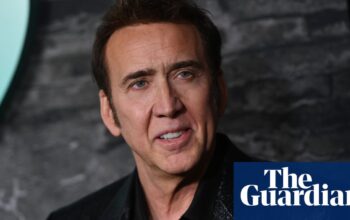In the summer of 1969, promoter John Brower thought he had a foolproof plan for a classic concert. Though just 22, he had already promoted successful shows by some seminal rock bands of the day, leading to his creation of the first full-scale pop festival in his native city of Toronto. That two-day event, held in June, starred acts as hot as Sly and the Family Stone, The Band, and Blood, Sweat & Tears. But the artist who wound up stealing the show that day was none other than Chuck Berry, who hadn’t had a hit in years and who was then in his early 40s, a virtual fossil by hippie rock fan standards. None of that mattered, according to Brower. “Chuck was so brilliant that everyone loved him,” he said. “His performance gave me the idea to get all the pioneering acts from the 50s back together to create the ultimate rock ‘n’roll revival show.”
What happened next lurched from one disaster to the next, only to transform, through a series of unforeseen circumstances and hail-Mary passes, into one of the most improbably significant concerts in pop history. “All of the iconic things that wound up happening weren’t anything like what any of us had dreamed of,” Brower said. “What I imagined was a caterpillar. What happened was a butterfly.”
What made it fly, however, required far more than simple serendipity. It required a full-scale shift in the winds of popular music, as well as in the life of one of its most towering figures: John Lennon. Counter to Brower’s original vision, the show that finally took place in September of 1969 wound up boasting the world premiere of Lennon’s Plastic Ono Band, which featured Yoko Ono in her most extreme live performance ever, as well as an infamous set by Alice Cooper’s group, who went on to become one of the biggest acts of the 70s. The show even birthed a trend in concert rituals that exists to this day.
The unfolding event, known as the Toronto Rock and Roll Revival, was memorialized by a Lennon/Ono concert album titled Live Peace in Toronto 1969, as well as a documentary directed by DA Pennebaker. But the crazy backstory of the show had never been told before a new documentary called Revival69, The Concert That Rocked the World. “I knew this was one of the most important stories in rock history,” said the film’s director, Ron Chapman. “Unfortunately, it got passed over amid the hoopla over Woodstock, which happened the month before.”
The story of how a 22-year-old promoter pulled such a show off was, in itself, unlikely. In the mid-60s, Brower had a band in Toronto called The Diplomats who toured the cool clubs of the Sunset Strip. “It was obvious to me from that experience how things work,” he said. “You rent a hall, get a band and promote it. It’s not rocket science.”
It helped that Brower had powerful connections. In college, he met kids whose families were rich enough to front money for shows in advance, including the Eatons, one of Canada’s wealthiest dynasties. When Brower got the notion to finance a festival boasting the pioneers of rock – not just Chuck Berry but also Little Richard, Bo Diddley, Jerry Lee Lewis and Gene Vincent – he had no idea that each of those artists could barely fill a club at the time. He found out after selling just 2,000 tickets for a venue that held 20,000 and which required at least 9,000 ticket sales to break even. To rally, he and his partner, the late Kenny Walker, added the band Chicago to the bill, as well as The Doors, to whom he paid $25,000 to headline the event, a whopping amount at the time. He borrowed the money for that from a guy he knew who headed Canada’s most fearsome motorcycle gang, The Vagabonds. Unfortunately, The Doors were not in great shape at that point following Morrison’s arrested for indecent exposure at a show in Miami, which caused most venues to shun them. “This was not the height of the Lizard King,” Brower said. “The bloom was off the rose.”
Small wonder their addition to the bill barely moved sales. Brower next tried bringing in the powerful LA rock promoter Kim Fowley to help, but his efforts went nowhere, causing Brower to almost cancel the whole event. In desperation, Fowley had the what-the-hell idea to have Brower call the office of John Lennon, whose private number he had, to see if he would get involved. “Fowley said to me: ‘The Beatles opened for Gene Vincent at the Star-Club in Hamburg, so he’s going to want to come,’” Brower said.
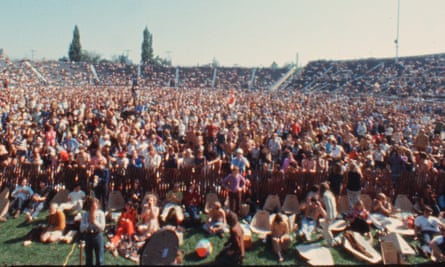
The idea seemed so far-fetched that Brower only dared ask Lennon to act as the show’s emcee. As luck would have it, Lennon was dying to play live at the time because The Beatles hadn’t performed a concert since 1966. He was also desperate to put the whole Beatles circus behind him and start his own band with his joined-at-the-hip partner, Ono. “All that information came out later,” Brower said. “At that point, I didn’t even know the Beatles were fighting.”
Though Lennon jumped at the chance to play, he had no band to play with. For that, he asked George Harrison to both join him and to put together the other players. Harrison demurred, he later explained, because he didn’t want the crowd to call out for Beatles’ songs. To cobble together a band himself, Lennon turned to an old friend, the bassist Klaus Voormann, and the respected drummer Alan White, whom he had never met. Small wonder when Lennon first called White, he hung up on him, thinking it was a prank. Lennon also reached out to Eric Clapton, though the guitarist hadn’t yet responded to his call when the Beatle told Brower not only that he would be coming but that his band would include the ex-Cream superstar. Thrilled, the promoter ran to the biggest local rock station to help spread the news. To prove his story was legit, he had taped his calls with Lennon only to discover that the head of the station thought the tape was doctored and, thus, refused to advertise the event. The station manager had reason to be suspicious. Two years before that, when Brower was promoting a theater tour of the Beatles’ film Magical Mystery Tour, he hoped to boost flagging sales in Ottawa by saying that George Harrison was in town, which wasn’t true. Things got worse when the station manager called the Beatles’ manager Allen Klein to see if the proposed Lennon appearance was legit, only to be told it was not. Lennon had said nothing about his plan to Klein.
That setback was nothing compared to the call that came to Brower the morning the Lennons were supposed to catch the plane to Toronto. The Beatle claimed that he and Ono weren’t feeling well and, so, had to cancel. The more likely reason they wanted to bail was because they hadn’t yet heard back from Clapton, whose participation was crucial. When he finally connected with the guitarist that morning, the Lennons miraculously recovered and even held a press conference at Heathrow to announce their appearance. The rest of the tickets to the Toronto show sold out in a nanosecond. Of course, fans who bought those tickets had no idea what to expect from Lennon and, frankly, neither did he. His thrown-together band had to rehearse a haphazard set list on the plane ride over without amplification, so they could barely hear each other.
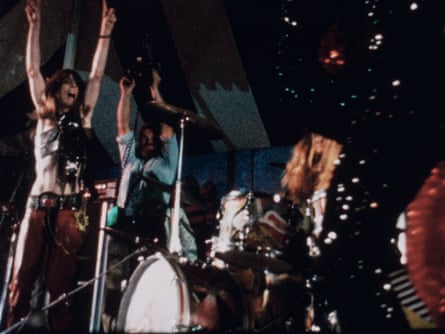
When they landed in Toronto they were greeted by a jarring sight – a motorcade of 80 clearly stoned bikers, whose flagrant drug use was tolerated by the police only because of Brower’s connections to the rich Eaton family. Things got hairier once they arrived at the show. A kerfuffle began over who would headline. The Doors had that billing, but they wanted Lennon to close the event, given his status. Because the Beatle had never fronted his own band, he was extremely nervous and, so, refused. Little Richard demanded that he close the event, proclaiming “I am the king!,” according to Brower, who somehow talked him down.
As it turned out, the performances by each of the rock pioneers floored the young crowd, who had no idea of their power. They were even more wowed by Alice Cooper’s band, then total unknowns who climaxed their anarchist set by throwing a live chicken from the stage. The next day’s papers erroneously reported that Cooper had bitten the head off the chicken and drank its blood, a story that proved crucial to fueling the band’s later reputation as shock rock legends. “No one had seen anything like that before,” Brower said.
Lennon was so concerned about how his own band would go over that the first thing he asked Brower for that day was coke. What the promoter gave him “was as pure as you could get. So, John was definitely buzzed,” he said.
His set with the Plastic Ono Band, which lasted a fast 40 minutes, was built on covers of rock‘n’roll classics and featured just one song from the Beatles’ catalogue, Yer Blues. When Lennon debuted his solo piece Cold Turkey, the crowd reacted with dead silence. “It wasn’t a performance that the audience resonated with musically,” Brower said. “It was just the awe and wonder of a Beatle being there.”
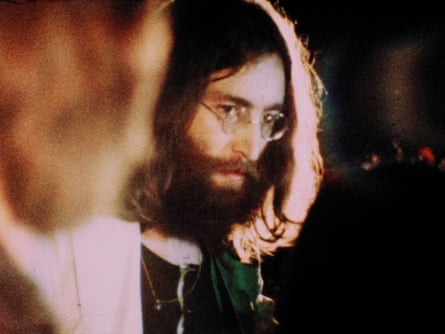
Their awe turned to horror when Ono did her two numbers, which ate up half the set. Performing at times inside a bag, Ono unleashed a torrent of her trademark shrieks and ululations which, said Voormann, sounded like someone who’d just stepped on a nail. Even so, he viewed Ono’s vocal as an inspired piece of protest art, capturing the horror of war much in the manner of Jimi Hendrix’s feed-back-strewn version of the Star Spangled Banner at Woodstock. Either way, the result sailed over the heads of the crowd. More impressive to them was a bit of theater that happened when the Plastic Ono Band took the stage. Fowley had the brainstorm to ask the audience to show their love by lighting matches or flicking lighters. In that moment, an enduring concert ritual was born.
Pennebaker’s original version of the film captured all the drama but only for a short while. Not long after its release, the Beatles manager made him take out the Lennon and Ono segment, causing the film to bomb. Klein’s demand may well have reflected his anger over the fact that just days after the show, Lennon quit The Beatles. At the same time, the event managed to fulfill Brower’s original mission to revive the careers of rock’s pioneers. “Word went out about how great their performances were, which helped them enormously,” he said.
In the process, the show offered an important link between rock’s past, through the pioneering stars, and its future, through the groundbreaking performances of artists like Cooper and Ono. “Those two acts were a key part of the magic of the day,” Brower said. “There’s nothing like walking away from a show, shaking your head and saying: ‘What the hell was that?’ It’s the ultimate reaction.”
-
Revival69: The Concert That Rocked The World is out in US cinemas now with a UK date to be announced
Source: theguardian.com
